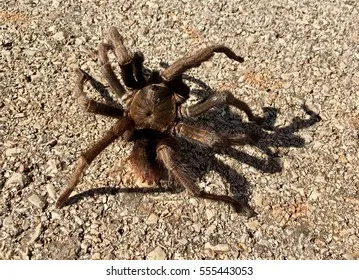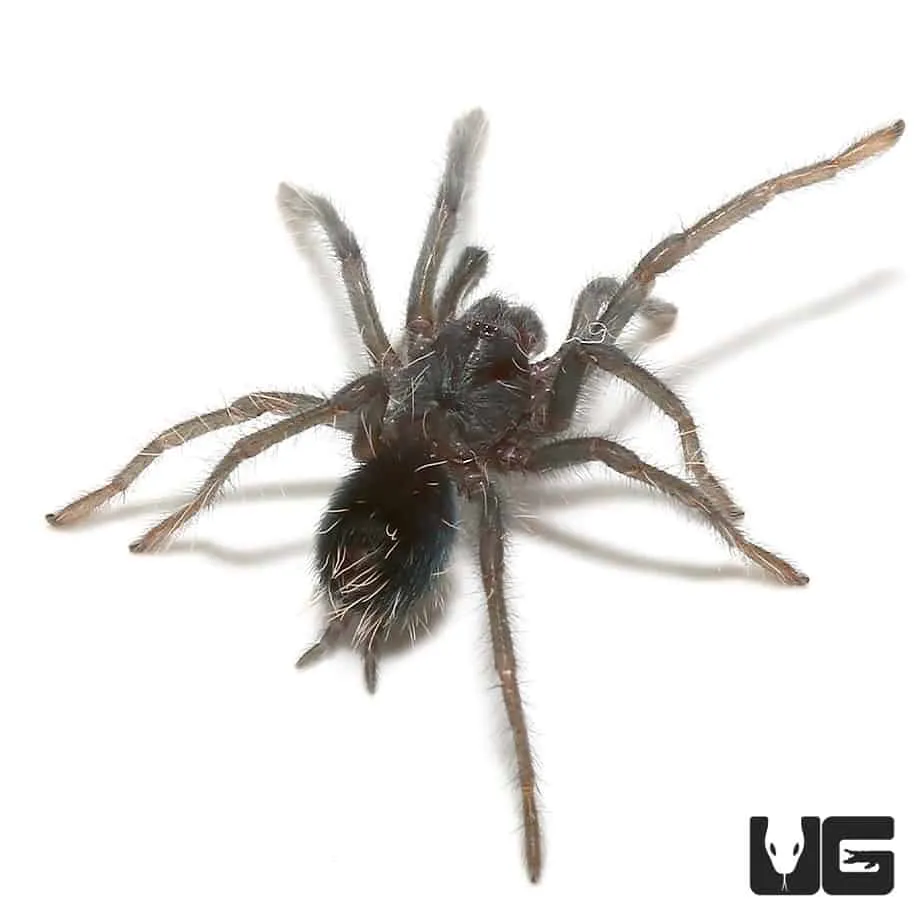What is the Hispaniolan Giant Tarantula (HGTG)?
The Hispaniolan Giant Tarantula (HGTG), scientifically known as Phormictopus cancerides, is one of the largest tarantula species in the world. Native to the island of Hispaniola, which includes Haiti and the Dominican Republic, this impressive arachnid captivates enthusiasts with its imposing size and striking appearance. These tarantulas are a popular choice for those interested in exotic pets, but their size and care requirements make them a commitment. Understanding the size of the HGTG is crucial for proper care, enclosure setup, and appreciating the magnificence of this fascinating creature. Their size, coupled with their impressive leg span and overall bulk, distinguishes them within the tarantula world, making them a subject of great interest and fascination for both arachnologists and spider enthusiasts alike.
The Average Hispaniolan Giant Tarantula Size
The size of an HGTG can vary, but generally, they are among the largest tarantulas. Measuring their size involves considering their leg span, which is the distance from the tip of one leg to the tip of the opposite leg when fully extended, and their body length, which is the measurement of the carapace and abdomen. On average, a mature HGTG can have a leg span ranging from 7 to 9 inches (18 to 23 cm). Their body length typically measures around 3 to 4 inches (7.5 to 10 cm). However, individual sizes can vary depending on factors like genetics, diet, and overall health. It’s important to note that these are average sizes, and some specimens may grow larger under optimal conditions.
Female HGTG Size

Female Hispaniolan Giant Tarantulas tend to be larger than males. This sexual dimorphism is common in many tarantula species. Mature females can often reach the upper end of the size range, with leg spans sometimes exceeding 9 inches (23 cm). Their larger size is often associated with their reproductive capabilities, as they need to carry and care for their eggs and spiderlings. Furthermore, female HGTGs tend to have a longer lifespan compared to males. The extended lifespan gives them more time to grow and reach their maximum size. The robustness of females makes them particularly impressive, showcasing the power and grandeur of this species.
Male HGTG Size
Male Hispaniolan Giant Tarantulas are generally smaller and more slender than females. They typically have a shorter lifespan, as their primary purpose is to mate. The average leg span for a male HGTG is usually on the lower end of the size range, often around 7 to 8 inches (18 to 20 cm). Furthermore, males possess several physical characteristics that distinguish them. These include the presence of tibial hooks on their front legs, which are used to hold the female’s fangs during mating, and pedipalps that are modified for sperm transfer. These features play a crucial role in their reproductive behavior and are noticeable upon reaching maturity.
Factors Affecting HGTG Size
Several factors influence the ultimate size an HGTG will reach. These factors can determine whether a tarantula is at the lower end of the average range or reaches the higher extremes. The environmental conditions also have a significant impact. Additionally, genetics also plays a role, with some tarantulas having a natural predisposition for larger or smaller sizes, regardless of the care they receive. A combination of these factors determines the overall size and health of an HGTG, and understanding their impact can help in providing the best possible care for these remarkable creatures.
Diet and Nutrition Impact on Size

A proper diet is crucial for HGTG size. Providing a variety of appropriately sized insects, such as crickets, roaches, and mealworms, is essential. These insects should be gut-loaded to ensure they are nutritious and rich in vitamins and minerals. Overfeeding can lead to rapid growth and potential health issues, while underfeeding can stunt growth. The tarantula’s size and growth rate should guide the frequency and amount of feeding. Regularly monitoring the tarantula’s abdomen size, which should be plump but not overly distended, helps in adjusting feeding schedules. Additionally, providing access to fresh water is critical for their health and growth, supporting their molting process and overall well-being.
Age and Growth Stages Influencing Size
HGTGs, like all tarantulas, grow through molting – shedding their exoskeleton to accommodate growth. The frequency of molting decreases as they age. Spiderlings molt frequently, sometimes every few weeks, while adults molt much less often, perhaps once a year or even less. Each molt allows the tarantula to increase in size, with males generally reaching maturity faster than females. Understanding the molting cycle is important for tarantula care. Providing a humid environment and avoiding disturbances during this vulnerable period is essential for their health and proper growth. The growth rate slows down as they approach their full size, with each molt contributing incrementally to their final dimensions.
Habitat and Environmental Conditions
The environment significantly affects HGTG size and overall health. A properly sized enclosure, appropriate temperature, and humidity levels are necessary. The enclosure should provide enough space for the tarantula to move, hunt, and burrow. The substrate should be suitable for burrowing, and the environment should maintain a temperature between 75-85°F (24-29°C) and a humidity level between 60-70%. Regular monitoring of these conditions is essential to ensure the tarantula is thriving. Stress can inhibit growth, so minimizing disturbances and providing a secure, comfortable habitat is crucial for the tarantula’s well-being and size development. Poor environmental conditions can lead to stunted growth and other health issues.
Top 5 Facts About Hispaniolan Giant Tarantula Size

Fact 1 The Biggest Tarantula
The Hispaniolan Giant Tarantula is among the largest tarantula species in the world, known for its impressive size. This prominence makes them highly sought after by tarantula enthusiasts. Their size is a key factor in the attention they receive, as it distinguishes them from many other species and highlights their unique qualities. When compared to other tarantulas, the HGTG’s considerable size often places it at the forefront in discussions about impressive arachnids, attracting those interested in the biggest and most imposing spiders. Their size is not only a physical attribute but also adds to their mystique and appeal.
Fact 2 Size Differences
There are notable size differences between male and female HGTGs. Females generally tend to be larger and more robust than males, a characteristic of sexual dimorphism common in tarantula species. This size difference is influenced by several factors, including the females’ longer lifespan and reproductive responsibilities. Understanding these size distinctions helps in differentiating between the sexes and understanding the species’ natural biology. Knowing these variations is essential for providing proper care and recognizing potential health problems that might impact the size or growth of either sex.
Fact 3 Size Comparison to Other Tarantulas

The Hispaniolan Giant Tarantula’s size is impressive when compared to many other tarantula species. While other tarantulas may have impressive leg spans, the HGTG’s overall bulk and body length often place it among the giants. Comparing the size of the HGTG with other well-known tarantulas such as the Goliath Birdeater or the Pinktoe Tarantula provides perspective and highlights its remarkable stature. This comparison emphasizes the HGTG’s place within the tarantula family and its appeal to enthusiasts. Understanding these size comparisons gives hobbyists and researchers a clear understanding of the species’ unique physical characteristics.
Fact 4 Molting and Size Changes
Molting is a crucial process in the HGTG’s growth and is directly linked to its size changes. As the tarantula sheds its exoskeleton, it creates space for growth, with each molt potentially adding to its overall size. The frequency of molting decreases with age, influencing the rate at which the tarantula grows. The molting process is vulnerable. Providing a stable and stress-free environment during this period is essential for the tarantula’s health. Recognizing the signs of an impending molt and understanding the subsequent growth stages are key aspects of responsible HGTG care.
Fact 5 Size and the Tarantula’s Lifespan
The HGTG’s size is also related to its lifespan, particularly the difference between males and females. Females, which are typically larger, generally live longer than males. This longer lifespan allows them to grow to their maximum size and contributes to the overall development and health of the species. The connection between lifespan and size highlights the importance of providing appropriate care throughout the HGTG’s life. Understanding this relationship can help enthusiasts in estimating the growth potential of their tarantula and adjusting care practices to maximize longevity and well-being.
Conclusion

The Hispaniolan Giant Tarantula’s impressive size makes it a captivating species. From understanding the average size to recognizing the factors that influence growth, appreciating the HGTG is essential for both enthusiasts and arachnologists. Knowing the differences between males and females, along with the impact of molting and environmental conditions, allows for better care and appreciation of this incredible creature. With the right care and understanding, the HGTG can thrive, providing years of fascination and joy for those who admire them. The size of the Hispaniolan Giant Tarantula isn’t just a physical attribute; it’s a key aspect of its identity and appeal.
